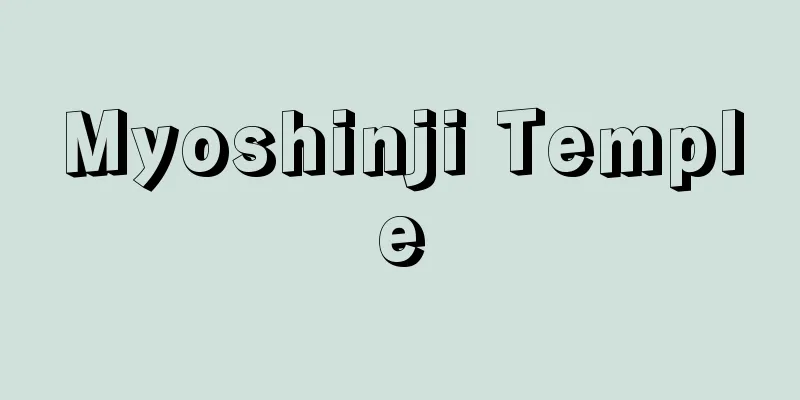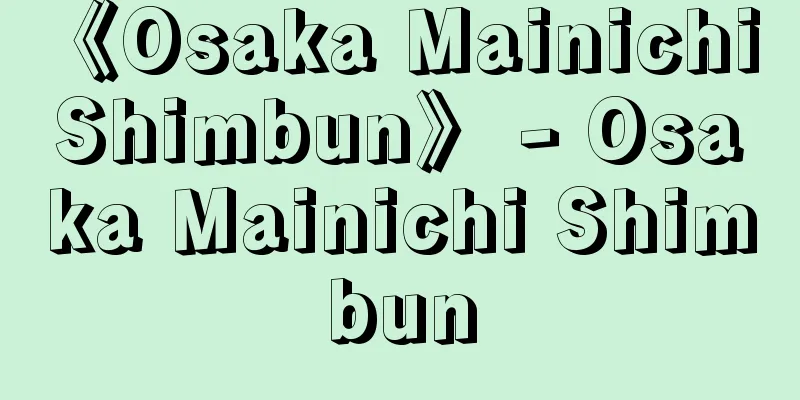Pottery - Toujiki (English spelling)

|
Along with glass and cement, it is one of the most representative ceramic products. It is a vessel made from clay or similar raw materials, which is fired at a temperature at which the desired properties are obtained after molding, but the shape is not lost. In other words, it includes all fired products from earthenware, stoneware, and porcelain, and is a general term for "pottery" that is widely used in Japan. The English name "pottery" comes from the Latin word "poterium," which means a wine cup, but is now used in a very broad sense to refer to all kinds of ceramic products. In this respect, it is the same as "pottery," but it can also be limited to hollow vessels (deep dishes, shallow dishes, cups, etc.) or tableware. It can also include modern ceramics, which are made by replacing some of the natural materials of traditional ceramics, which use only natural materials, with synthetic or artificial materials. Products made from carbides and nitrides other than natural materials and oxides are sometimes called "special ceramics." [Yoichi Motoki] historyThe art of making ceramics is so ancient that it is difficult to determine its origin at present. It probably originated independently in several different countries in the East and gradually spread to the West. The earliest form of pottery seems to have been made in baskets covered with clay from the outside or inside and heated over a fire (Neolithic). Cord work appeared next. The Chinese began to use the wheel around 2400 BC. Somewhat later, the Egyptians, Assyrians and Persians made fine pottery, with the Chinese being the most important potters. In the West, the Greeks developed a very high degree of pottery during their hegemony. The production of majolica and faience in Europe and the Near East, and the first porcelain in China and later in Europe, eventually gave rise to the production of new ceramics. Ceramics should be studied from three points of view: (1) its usefulness, (2) its beauty, and (3) the combination of these two with quality. In the East, beauty is the sole objective, and its quality merely enhances the decoration placed on it. In contrast, European ceramics combine usefulness with beautiful forms and decoration. But there are many differences of opinion about the artistic merit of ceramics, both modern and past. It is true that many people, whether in the East or the West, unnecessarily despise modern products and overly praise old ones. The reason why ceramics are called dishes, vases, bottles, etc. is because each has a specific purpose, and they are decorated to complement that purpose. Therefore, the quality of the base is limited to meet those purposes, and the decorations, glazes, and pigments that can be used are also limited. For example, heat resistance is the primary requirement for a base that is intended to be exposed to an open flame, and ingredients that are harmful to food must be avoided. For information on glazes and materials used to decorate ceramics, please see the "glaze" entry. [Yoichi Motoki] "Illustrated Ceramics for Crafts - From Tradition to Science" by Yoichi Mogi (1970, Gihodo Publishing) " "The Technical History of Ceramics" by Yoichi Mogi (1983, Gihodo Publishing) [Reference] | | | | |©Shogakukan "> Example of ceramic manufacturing process ©Shogakukan "> Classification and characteristics of ceramics ©Shogakukan "> Ceramic raw materials Source: Shogakukan Encyclopedia Nipponica About Encyclopedia Nipponica Information | Legend |
|
ガラス、セメントとともに窯業製品(セラミック製品)の代表的なものの一つ。粘土またはそれに類似する原料を用い、成形後目的とする性質が得られ、しかもその形状が失われない温度で焼成してできた器物をいう。すなわち、土器から陶器earthenware、炻器(せっき)ware、磁器porcelainに至るすべての焼成品が含まれ、日本で広く使用されている「焼物」の総称である。英名のポッタリーはラテン語の酒杯poteriumに由来する語であるが、現在ではあらゆる種類のセラミック製品に対するきわめて広い意味に用いている。この点「焼物」と同じであるが、空胴容器(深皿、浅皿、コップなど)、あるいは食卓器に限定することもある。さらに天然原料のみを用いた伝統セラミックスtraditional ceramicsの天然原料の一部を合成原料や人工原料で置換してつくった近代セラミックスmodern ceramicsまでを含める場合もある。なお、天然原料や酸化物以外の、炭化物や窒化物などからなる製品を特殊セラミックスspecial ceramicsという場合がある。 [素木洋一] 歴史陶磁器製造技術はきわめて古いことなので、現在その起源を明らかにすることは困難である。おそらく東方の異なった数か国で独自に始まり、徐々に西方に広まったようである。籠(かご)を用い、これに外面から、あるいは内面に粘土を塗り付け、火の上で加熱したのがポッタリーのもっとも古い形式であったようである(新石器時代)。次の時代に出現したのが紐(ひも)造りである。中国では紀元前2400年ころからろくろの使用が始まった。いくらか後期に、エジプト人、アッシリア人、ペルシア人が精陶器をつくり、中国人がもっとも重要な陶工になった。西方ではギリシア人が覇権を握っていた時代に非常に高度な陶芸をおこした。ヨーロッパと近東におけるマジョリカとファイアンスの製造、および中国における最初の磁器およびその後のヨーロッパでの磁器の製造は、結局は新しい陶磁器の製造をもたらした。 陶磁器は、〔1〕その有用性、〔2〕その美しさ、〔3〕この両者と品質の結び付き、の3点から考究する必要がある。東洋では単に美を目的とし、その品質はその上につけた装飾を引き立てるにすぎない。これとは反対にヨーロッパの陶磁器は、美しい形態をもった有用性と装飾とがいっしょになったものである。しかし現代および過去の陶磁器の芸術的な真価に対する意見には多くの相違がある。多くの人々は現代製品に対して不必要に軽視し、古い製品に対して過度に賞賛することは洋の東西を問わずいえることである。 陶磁器に皿とか壺(つぼ)とか瓶(びん)というような名称がついているのは、それぞれ使用目的があるからで、それを引き立てるために装飾がついているものである。したがって、それらの目的のために素地(きじ)の質が制限され、使用される装飾、あるいは釉(ゆう)(うわぐすり)や顔料(がんりょう)も制限されることになる。たとえば、直火(じかび)にかける目的をもった素地では耐熱性が第一に要求され、食品に対しては有害な原料の使用は避けなければならない。釉および陶磁器彩飾の物質については「うわぐすり」の項目を参照されたい。 [素木洋一] 『素木洋一著『図解工芸用陶磁器――伝統から科学へ』(1970・技報堂出版)』▽『素木洋一著『セラミックスの技術史』(1983・技報堂出版)』 [参照項目] | | | | |©Shogakukan"> 陶磁器の製造工程例 ©Shogakukan"> 陶磁器の分類と特徴 ©Shogakukan"> 陶磁器の原料 出典 小学館 日本大百科全書(ニッポニカ)日本大百科全書(ニッポニカ)について 情報 | 凡例 |
Recommend
Anchieta, Juan de (English spelling) Anchieta Juande
…[Shigeo Hamada]. … *Some of the terminology expl...
Bunraku Theatre
The name of a puppet theater and troupe. It began...
View of the afterlife - Raisekan
In a broader sense, it can refer to the idea of ...
Dry spring water - Karasen-sui
〘 noun 〙 A pond that is made recognizable as such ...
Antonov, AS (English spelling) AntonovAS
…A large-scale anti-Soviet peasant revolt that to...
Nirayama Castle
This castle was located in Izunokuni City, Shizuok...
ACV type ship type - ACV type ship type
…Propeller [Hideaki Miyata]. . . *Some of the ter...
Associated Press
...American news agency. Abbreviation for Associa...
Interstitial inflammation
…Syphilis and fungal infections also show a form ...
Depersonalization neurosis
...These symptoms appear as symptoms of neurosis,...
Shimizu Shikin
Novelist. Her real name was Toyo. She was born in...
Kurihara Hakuju
1910-1955 An agricultural economist from the Show...
Kaijinmaru
…When his first collection of stories, A New Life...
Lake Usoriyama
Lake Osorezan is a crater lake (caldera lake) of M...
Ahasuerus - Ahasuerus
…an eternally cursed wanderer in European legend....









